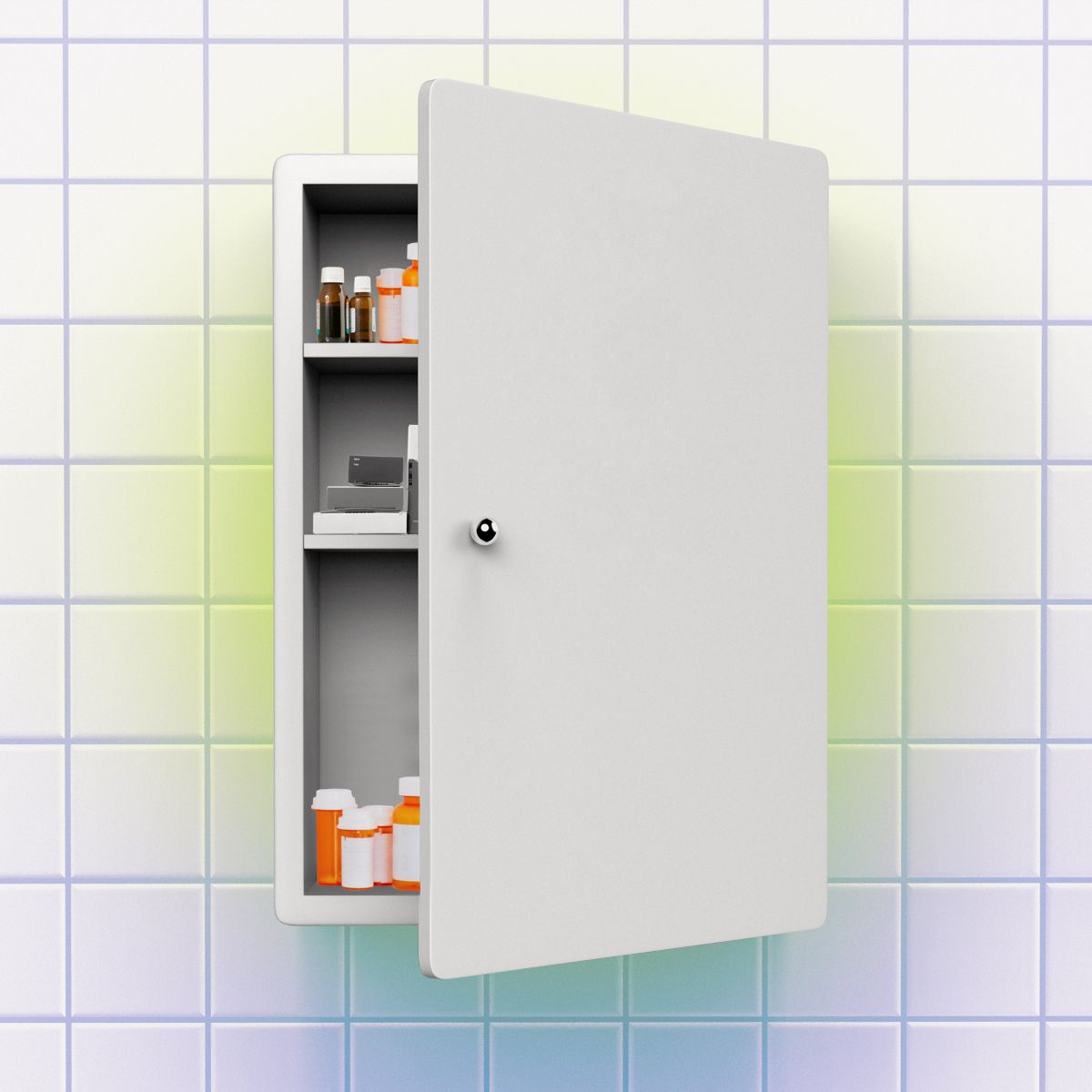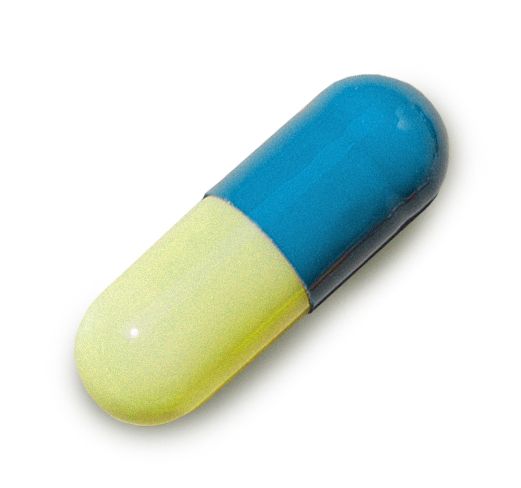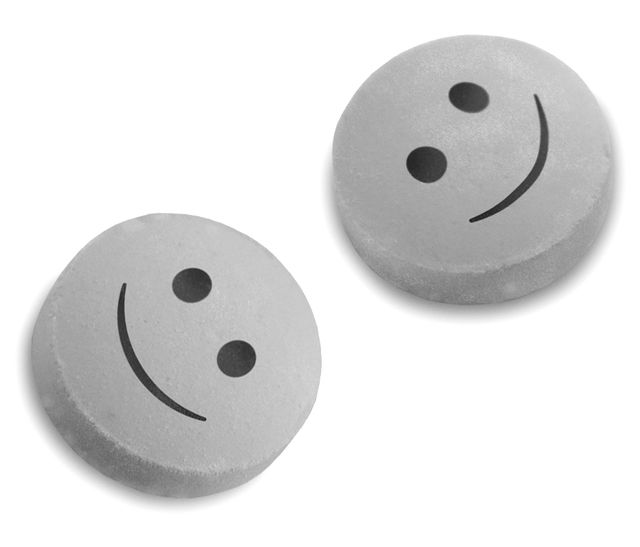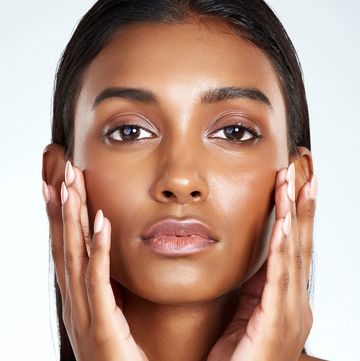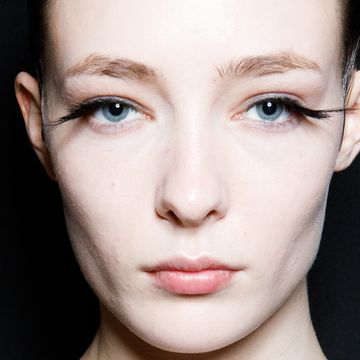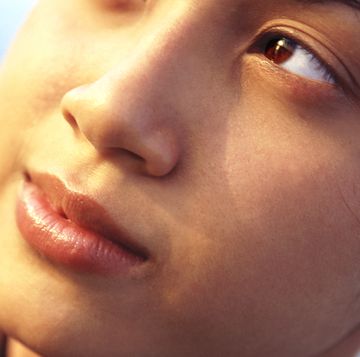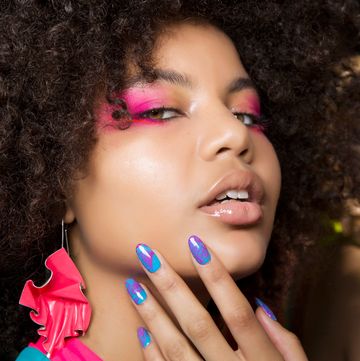In the spring of 2022, after seven years off psychiatric medications, I once again found myself staring at a little orange bottle filled with escitalopram, the generic form of Lexapro, one of the most prescribed medicines in the country. I was 43, the mother of two children under five, and, over the previous few years, a low-grade depression had settled over me like a fog, obscuring the beauty all around me. Maybe it was the hormonal chaos of perimenopause, which had snuck up on me, or the exhaustion of juggling small children, a career, and a husband who was traveling weekly for work. Maybe it was my DNA betraying me: my mother’s depression had swallowed her whole in her forties; at 50, she died by suicide. Whatever it was, I was desperate for something that might return me to a more positive, less anxious version of myself.
I was wary of psychiatric medications. In the mid-2010s, it had taken me two hard years to get off Zoloft and Klonopin, prescribed to me in my twenties for depression and anxiety. I tried all the things: breathwork, sound healing, and consulting with an integrative psychiatrist to identify any underlying nutritional deficiencies that might be causing my unease, of which there were none. I abstained from alcohol, exercised nearly every day, and spoke to a therapist twice a month. When all that failed, I popped 10 milligrams of Lexapro in April 2022 and hoped for some sunshine to pour in.
The same week I started Lexapro, two friends told me that they too had recently started the medication. This was no coincidence. More women than ever are on antidepressants, over 20 percent of us, according to the CDC. For many years, therapists, doctors, and Big Pharma have told us that depression is caused by a chemical imbalance, primarily of the neurotransmitter serotonin—a theory that many psychiatrists dismissed long ago as simplistic, but one that some 80 percent of the general public still believes. However, recent studies have called into question the chemical imbalance theory of depression, and in turn the safety and efficacy of antidepressants, leaving many of us wondering where to turn for relief.
Yet while more of us are medicated than ever, rates of depression, anxiety, and suicide have surged over the last 20 years. “There are only two possibilities,” says neuroscientist Thomas Insel, former director of the National Institute for Mental Health. “Either the treatments don’t work, or whatever’s driving those results is getting worse at a much higher rate than the treatments are going up. I think it’s a bit of both.”
Antidepressants have been the go-to treatment since Big Pharma first introduced selective serotonin reuptake inhibitors in the late ’80s, promising consumers that these medications would quell our chemically imbalanced brains by allowing more serotonin to circulate in them. Between 1988, when SSRIs were first introduced, and two decades later, antidepressant prescriptions for Americans over the age of 12 jumped 400 percent, and they are now the most commonly prescribed medications for 18 to 44 year olds. And when a single therapy session can cost over $200, compared to $10 for a 30-day prescription of Lexapro, it’s easy to see how antidepressants have become the first-line treatment, despite annoying side effects like loss of libido and weight gain.
Despite the popularity of antidepressants, they’ve come under attack in recent years, and our notions of what causes depression—and the best way to treat it—are evolving. A July 2022 study, an umbrella review of seventeen serotonin studies, by psychiatrist Joanna Moncrieff at University College London, shockingly found no correlation between low serotonin levels and depression. Though the study, published in Molecular Psychiatry, didn’t directly address antidepressants’ effectiveness, it revived a long simmering debate over their safety and efficacy. “We really don’t have any evidence or justification for thinking that these drugs work by targeting an underlying disease or some biological mechanism,” Moncrieff tells me. “They cause changes to the normal brain state that may in some circumstances be helpful, but there are other situations when those effects aren’t helpful, and there is always a downside to taking drugs.”
Some of the most prominent psychiatrists of our time are also rethinking the root causes of mental illness and the best treatments for everything from anxiety to bipolar disorder. In February 2022, Insel published Healing: Our Path from Mental Illness to Mental Health, a book that reversed his earlier work as the NIMH director in which he’d poured billions of dollars into understanding the biological underpinnings of mental illness, and instead, stunningly, argued for a wholesale rethinking of how we handle depression and other conditions. “There’s a tendency for us to think about mental illness in a crisis mentality,” Insel says. “It’s the infectious disease model: you have a problem, there’s a solution: medications that we can give you to fix it right away. But often, there are bigger issues, and just taking a pill is probably not going to be enough.”
Moncrieff and Insel’s work hints at an evolving understanding of psychiatric conditions as less a product of sheer neurobiology and more the result of a complex interplay of biological factors, such as genes and hormonal imbalances, and environmental influences including emotional trauma and stress. “We’re tying those two together much more closely to understand how the environment actually changes the expression of our genes,” says Gerard Sanacora, MD, PhD, director of Yale University’s Depression Research Clinic. The more current theory, he says, holds that depression is an issue of brain adaptability and connectivity. Chronic stress may disrupt the way the brain regions communicate with one another, increasing the risk for depression and anxiety.
Other recent studies have linked inflammation in the body—caused by poor diet, sedentary lifestyle, stress, and disease, among other factors—to depression. Women’s health expert Sara Gottfried, MD, believes depression is caused by a combination of biological, environmental, spiritual, psychological, and sociocultural factors. “We used to think that depression was caused by an imbalance of brain chemicals,” she said in a recent Instagram post. “This idea made pharmaceutical companies rich as the public bought into the idea that we need to take drugs to deal with the ups and downs of life, both serious and banal.”
At the moment, depression is treated as a one-size-fits-all diagnosis, when in fact, brain scans suggest that there may be as many as seven different types of the illness, with no singular cause or intervention, says Orange County-based psychiatrist to the stars Daniel Amen, who uses brain imaging as a diagnostic tool and counts the Kardashian-Jenner clan as clients. Hormonal changes in the years around menopause, when we are most at risk for depression, may be to blame for its prevalence in middle-aged women.
I came of age in the time of Prozac Nation, when antidepressants promised a cure. And many people do experience relief. “These treatments are quite effective,” says Sanacora. But just how helpful they are has been explored in several studies with varying results: one 2020 report by the National Institutes of Health showed them to be between 40 to 60 percent effective, while another found that they did not improve long-term well-being.
Part of the problem, psychiatrists say, is that 80 percent of psychiatric medications are prescribed by general practitioners in brief office visits, sometimes to people who may not qualify for a depression diagnosis, but are instead suffering from the ordinary ups and downs of life. After I had my second child in 2019, I complained to my OB at my six week postpartum visit that I was exhausted, overwhelmed, and frustrated by my weight. She was quick to offer up a prescription for Zoloft, when what I really needed was some sleep. “Most evidence suggests that the milder the depressive symptoms, the harder it is to show a benefit of antidepressants over placebo,” says Ronald Pies, MD, professor of psychiatry at Tufts University. “Generally speaking, antidepressants should be reserved for moderate-to-severe major depressive disorder. Talk therapy is generally the first-line treatment for milder cases.”
Researchers have also begun to consider possible risks from long-term use of antidepressants, from rare bleeding disorders to dependency and problems with withdrawal when getting off of them. In 2019, the European Medicines Agency, the EU’s pharmaceutical safety watchdog, required that antidepressant labels be updated to warn that sexual function—in the form of genital numbing, loss of libido, and difficulty orgasming in men and women—may be permanently damaged by antidepressants, even after stopping them. In June 2022, the National Institute for Health and Care Excellence, the UK’s health care monitor, revised its guidelines for treating low to moderate depression, recommending therapy, exercise, and mindfulness over antidepressants. The agency also acknowledged the potential difficulties of getting off the medications, suggesting a slow tapering protocol and warning practitioners that withdrawal symptoms could last months.
While American guidelines typically lag behind those of the EU, an anti-psychiatry movement has been steadily growing in the United States in recent years. “It’s about being fully informed about what psychiatric medications are and what they are not, their side effects, which may be long-term, and how challenging it can be to get off of them,” says Laura Delano, a mental health advocate and author of the forthcoming memoir Unshrunk, which details her experience breaking free from the world of psychiatry.
Thankfully, at a time when people are rethinking antidepressants, new treatments for depression are gaining popularity. The most buzzed-about are ketamine and psilocybin-assisted therapy, which are gaining mainstream support. While typically reserved for the most stubborn cases of depression, these methods have ranged from being equal to more effective at treating the condition than antidepressants in just a few sessions. But despite encouraging research, some people, understandably, might not be quite ready for a remedy that involves a six-to-eight-hour psychedelic trip, particularly when those treatments, such as a course of ketamine, can cost over $3,500.
Ultimately, Insel suggests long-term recovery is about more than just finding the right medication; it’s built upon what he calls the three Ps: people, place, and purpose—in other words, finding community, a nurturing environment, and meaning in our lives, “That’s what well-being is about,” he says. “Don’t assume that if you get the right dose of Prozac, your issues will soon go away.”
As for me, Lexapro did work. It softened the edge of my anxiety and stopped me from going down the rabbit hole of rumination. Over the years, I have learned that, for me, antidepressants work best as a temporary reprieve from my acute symptoms while I work through therapy to heal the deep emotional wounds causing them. And that’s what we’re learning antidepressants are: a Band-Aid, not a cure. But somewhere along the way, our quick-fix culture has lost sight of that, causing us to become dependent on pharmaceuticals for all manner of disease.
However, the bigger issue that must be addressed is a culture that is simply running women ragged. In addition to developing better medications, something fundamental needs to shift: access to affordable, quality mental health care, and programs like paid maternity leave and federally subsidized child care. We need to resist what Dr. Amen, the celebrity psychiatrist, calls “the lies of happiness.” “For decades,” he says, “our society has brainwashed us into believing happiness is based on things—more money, alcohol, decadent food, likes on Instagram—that actually damage our brains, ruin our minds, and increase depression.”
As much as I had sworn off psychiatric medications, I had to face the complicated reality that they can work. And that, for many women, they may be the most convenient and accessible choice. But we need to use them with our eyes wide open, knowing they come with some risks and that they will never truly heal us. To stem the tide of our mental health crisis, we need a more holistic approach. Until then, we just want relief.
Kelley Manley is a freelance journalist whose work has appeared in the New York Times, Vogue, Marie Claire, Departures, and other national and regional publications. Follow her on Instagram @KelleyMcMillanManley.
